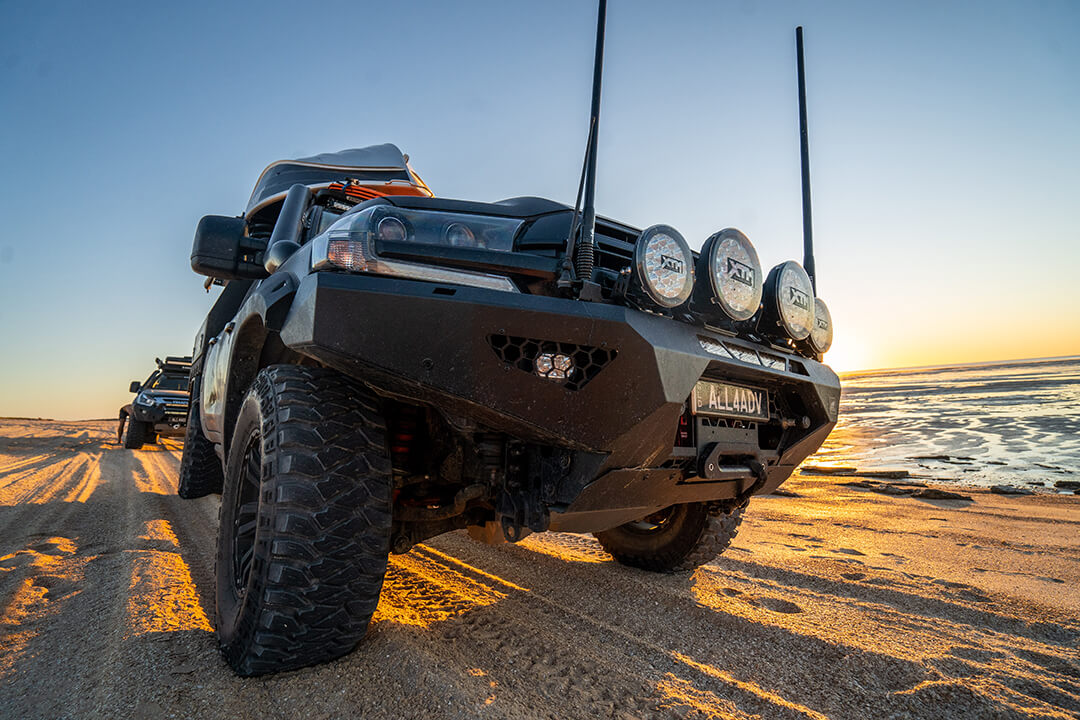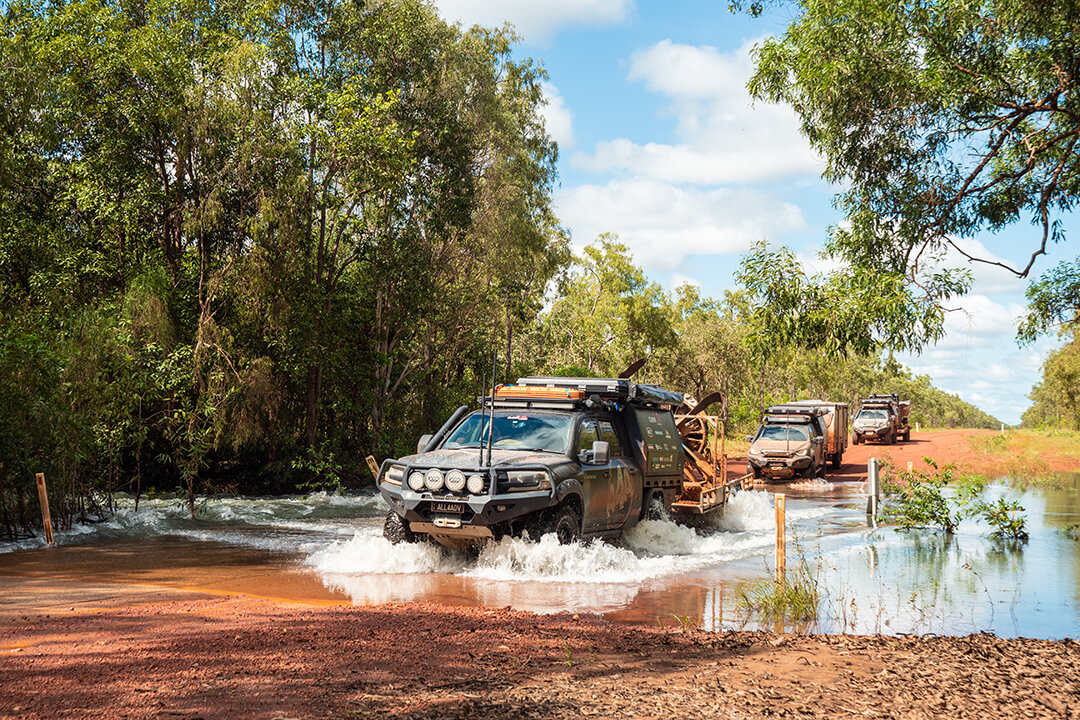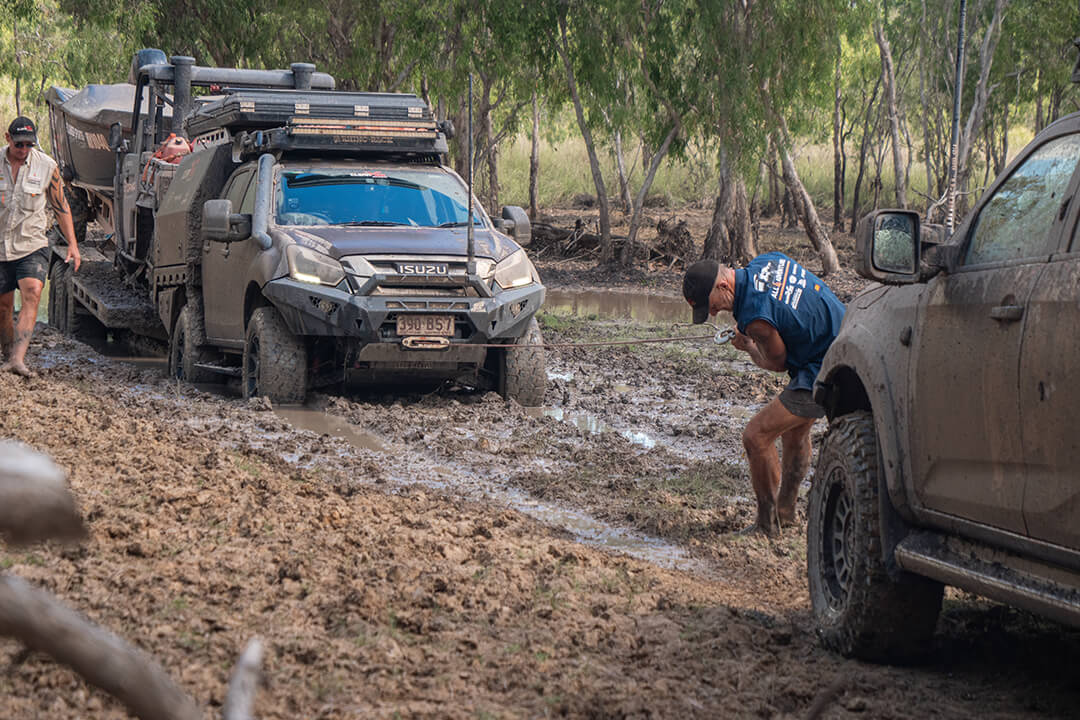We've collaborated with Jase Andrews from All 4 Adventure to bring you the ultimate tyre pressure 101 guide. Jase has been motoring off the beaten track for most of his life and in that time has dropped more tyres down than you've probably had hot dinners! Check out our guide below and keep an eye out for some cracker tips from the Campboss himself!
Whether you're a 4-wheel freshie or king of the off-road, understanding tyre pressures and how to change them is super important. It can seriously affect your car's performance offroad, from giving you a smoother ride to extending the life of your tyres, not to mention preventing you from getting bogged – it's something everyone should know. Although tyre pressure still plays its part on your standard sedan or hatchback, it's the fourbie we're here to talk about. So, before you go getting the wheels dirty, our BCFing Experts thought they'd share with you their tyre pressure 101! It's choc-a-block with info sure to come in handy next time you venture off the hard stuff.
What is PSI?
Pounds-per-square-inch or PSI as it's commonly known is a measurement of pressure! It's used to measure both gasses and liquids. In this case, we're using it to measure the pressure of gasses and how much air is in your tyre.
Why is tyre pressure important?
As we mentioned in the intro, ensuring your tyres are set to the correct PSI is a crucial part of the 4-wheel driving puzzle. You'll find that traction is your best bud as soon as you leave the bitumen and increasing or decreasing the overall size of your tyre's footprint can make a huge difference to your driving experience. Now, each terrain has its own preferred tyre pressure range, so whether you have sand, dirt, mud, or snow on the cards, it's worth knowing what PSI will work best for you. There's no such thing as the perfect PSI, but we've pulled together a general guide that'll sort you out with the right tyre pressure no matter what you're driving on.

What tyre pressure should you use on sand?
Between 14-20 PSI will sort you out for most sand driving situations. As conditions can vary depending on how soft the sand is, it's best to lower your tyres to 18 PSI to begin with. If the sand you're driving on is firm or wet, you'll be able to get away with something higher like 20 PSI or even more. If you're dipping your tyres in the sand for the first time, be sure to check out our ultimate beginners guide to beach driving.
Jase's go-to tyre pressure for sand driving is 18 PSI and as low as 12 PSI if you're having troubles with traction!

What tyre pressure should you use on dirt tracks?
Between 26-32 PSI is bang on for those track-tragics. Whenever dirt tracks or rough gravel is involved, your tyres can cop a real flogging. Preventing punctures from sharp rocks or unsuspecting potholes is the aim of the game here, with that little extra give in the tyres working wonders. Lucky, most of the time you'll be driving at a slower speed which allows you time to negotiate the tough terrain.
Jase's go-to tyre pressure for dirt tracks (at slow speeds) is 30-32 PSI.
What tyre pressure should you use on snow?
Between 30-35 PSI is the way to go when driving on the white stuff! Now, snow can be an unpredictable creature to drive on and negotiating it safely can take some effort. It's easy to lose traction on the snow affecting your car's power, brakes, and steering, which is why it's advised to keep your tyre pressure at a higher level. Underinflated tyres offer too much traction (we know it's confusing) that can make your steering extremely difficult and dangerous. In some cases, you may even need the help of snow chains. These aren't only a handy addition to the rig but in some cases are mandatory.

What tyre pressure should you use on mud?
Between 22-25 PSI should keep you unstuck! Who doesn't like getting the tyres a little dirty? It's one of the best parts about 4-wheel driving, right? – The clean-up afterwards however, not so much. While traversing the sticky stuff can be a lot of fun, it can also have its dangers with the unpredictable mud terrain not taking any prisoners. A bit like driving on sand, mud tracks can also be inconsistent! This is why it pays to take things easy and drop your tyre pressure as need be. If you go too low, you can run into issues like mud inside the tyre bead causing minor leaks, or worst-case scenario, peeling the tyre off the rim.
For negotiating muddy tracks, Jase says to drop your tyres by 10 PSI *from your regular on-road pressure*, and by a further 5 PSI if more traction is needed.
What tyre pressure should you use on road?
Unfortunately, we've all got to get back to work at some point, which means pumping our tyres back up to the correct PSI for road use. You can normally find this on the tyres themselves or on the inside of your car door. It always helps to bring along a compressor so that you can air up for the black top.
*You don't want to spend too much time driving on flats, so as soon as you're back on the bitumen it's time to pump it up!*
How to lower your tyre pressure:
While we all know the ole stick in the air valve trick, there's a much better way to drop those tyres down. You'll find plenty of great tyre deflators and gauges at your local BCF that'll do the job more efficiently and without damaging your tyres. Most models come with instructions from the manufacturer that'll point you in the right direction.
Take a geez at our step-by-step guide to using the Campboss Tyre Deflators (and a handy vid from the man himself).
- Unscrew locking ring on deflator to reveal stem gauge
- Adjust the PSI setting by moving the body up and down the threaded shaft of the stem gauge (Pre-set to your desired PSI to save time and effort)
- Screw deflator onto tyre valve in a clockwise direction until air starts to release (Plunger should automatically release from the base of the deflator)
- Wait until you can no longer hear air escaping and the plunger has returned to its original position (Tyre should now be at correct PSI)
- Remove deflator from tyre valve
- Repeat process on other three tyres


